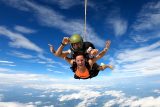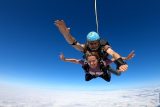The Skydiving Landing Explained
Blog
 Posted by: Curtis White
2 years ago
Posted by: Curtis White
2 years ago
The goal of every jump is to end with a safe skydiving landing. As such a pivotal part of the skydiving experience, often the parachute landing is fraught with considerable anxiety.
Old-school video reels of military jumpers crashing into the ground beneath round parachutes have given the skydiving landing a bad rap. But when it comes to civilian skydiving a lot has changed since then – like, a WHOLE lot. Improvements in equipment, the parachutes themselves, and the training involved have made it possible for the impact of the parachute landing to be pretty gentle.
Hopefully, after we’ve explained a few things about skydiving landings, you’ll feel confident and ready for your skydiving adventure! What do you say? This is the skydiving landing explained!
Basic Skydiving Landing Technique
In modern civilian skydiving, we use rectangular, RAM-air parachutes. Essentially, two layers of material are sewn into elongated tubes (we call them cells). The cells are open at the front of the parachute and are sealed at the back. As the parachute moves forward, the cells fill with air. This provides structure to the “wing” and gives it shape.
A series of cascading lines are connected at different points on the parachute. The steering lines are attached along the back edge of the parachute. Four lines converge down to one on each side, ending in a loop we call the toggle – these lines are called the steering/brake lines.
These lines are utilized in the flaring portion of the parachute landing. Flaring the parachute slows the downward and forward momentum of the parachute and allows skydivers to come to a controlled stop.
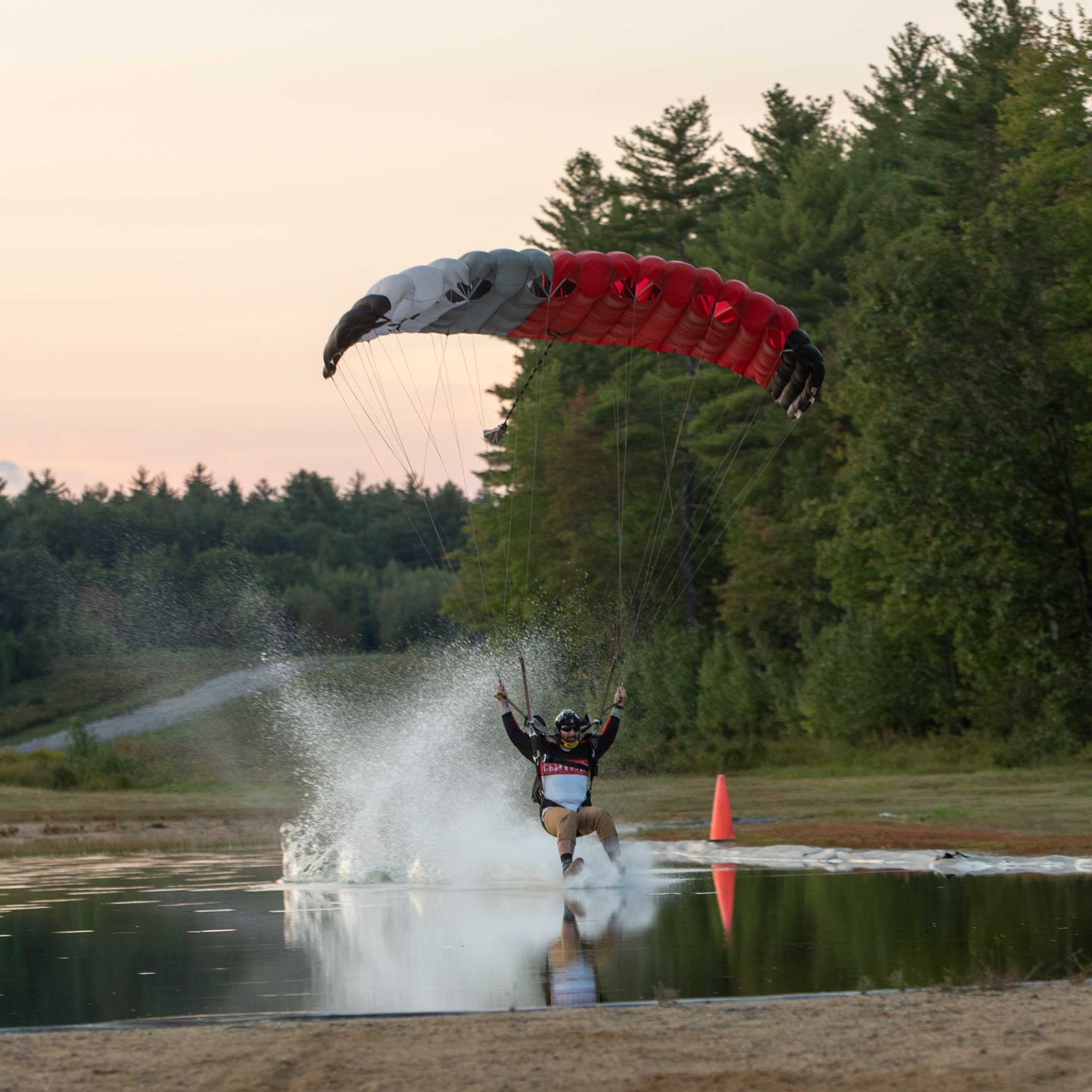
Tandem Skydive Landing
The tandem skydiving landing differs slightly from the landing used for a solo sport skydiver simply because there are two people involved instead of just one. Because the student is attached to the front of the instructor, the tandem jump landing is quite technical and requires training and experience.
The landing technique your instructor will use will depend on your mobility, the wind conditions, and your comfort/skill level. It is very important to listen closely to the pre-jump briefing and any instructions your tandem instructor gives during the tandem skydive landing.
Generally, on a tandem landing, the instructor will prepare the student by asking them to lift their legs for landing. This helps to keep the tandem student’s legs free and clear of the instructor’s legs and allows the instructor to slide in the landing for minimum impact.
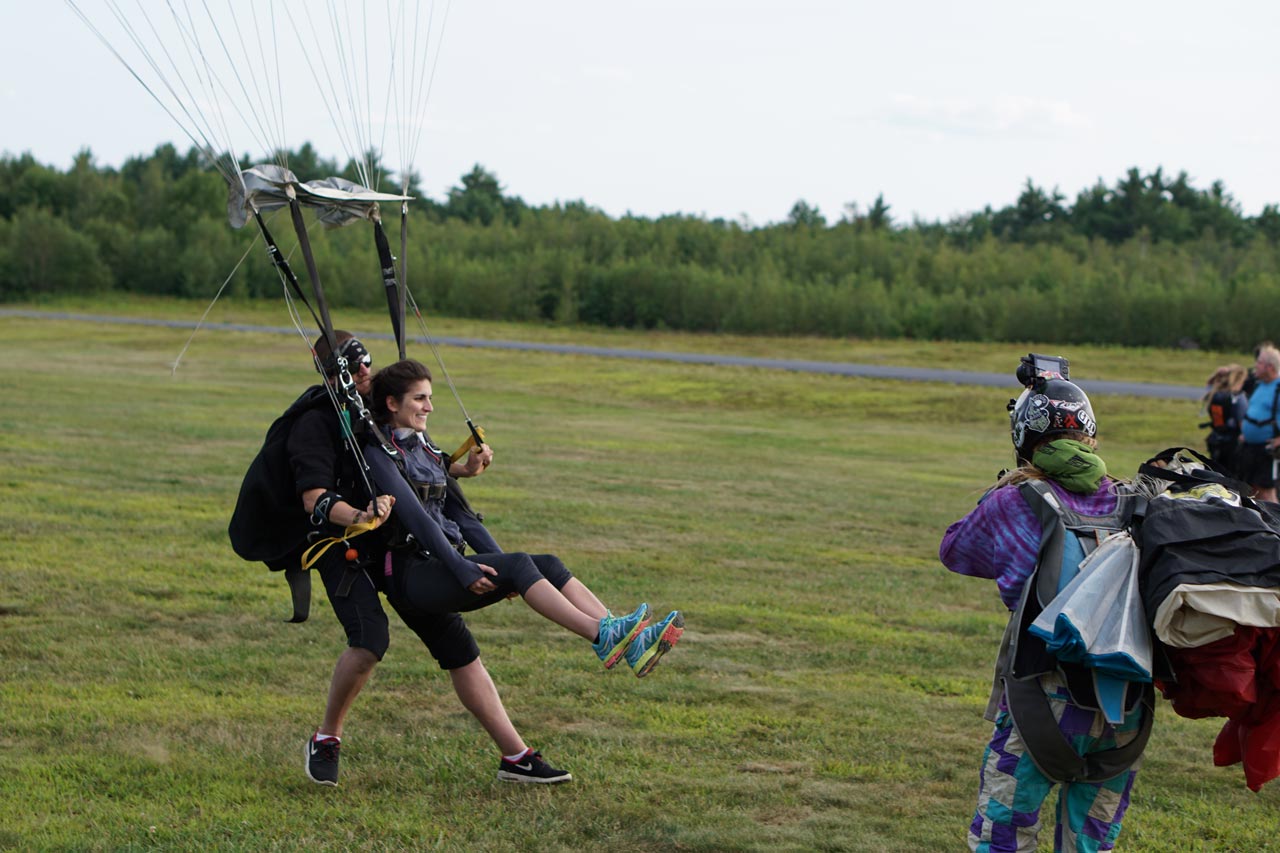
Student Parachute Landing
Getting the knack of the skydiving landing takes practice. To prevent injuries during the landing learning curve, solo student skydivers are taught the Parachute Landing Fall (PLF).
The PLF technique minimizes impact on the joints in the case of an abnormal or hard landing. In a Parachute Landing Fall, the student presses the feet and knees together, touches down first on the balls of the feet, then shifts to allow the side of the calf to come into contact with the ground, continuing momentum by rolling onto the outer thigh and the other side of the back.
Everyone builds their skydiving landing skills at their own pace. Mastering the Parachute Landing Fall helps to protect skydivers while they learn.
Sport Skydiving Landing
In the sport of skydiving, there is always more to learn. This is why even experienced licensed skydivers attend canopy courses to improve their landings and to learn new skydiving landing techniques, such as “swooping.”
Swooping is a form of canopy piloting where individuals turn the parachute quickly at certain degrees of rotation – depending upon the skill of the individual flying the parachute – to build speed. Then using inputs on the rear risers or brake lines, the individual changes the pitch of the canopy to glide across the ground at a high speed.
Some of these individuals can reach speeds of 60 to 70 mph! Greg Windmiller currently holds the world record. He covered 70 meters in 1.960 seconds, roughly reaching a speed of 95 mph!
High speeds reduce the margin for error, so, swooping should only be attempted by highly experienced skydivers who have first received training and canopy coaching.
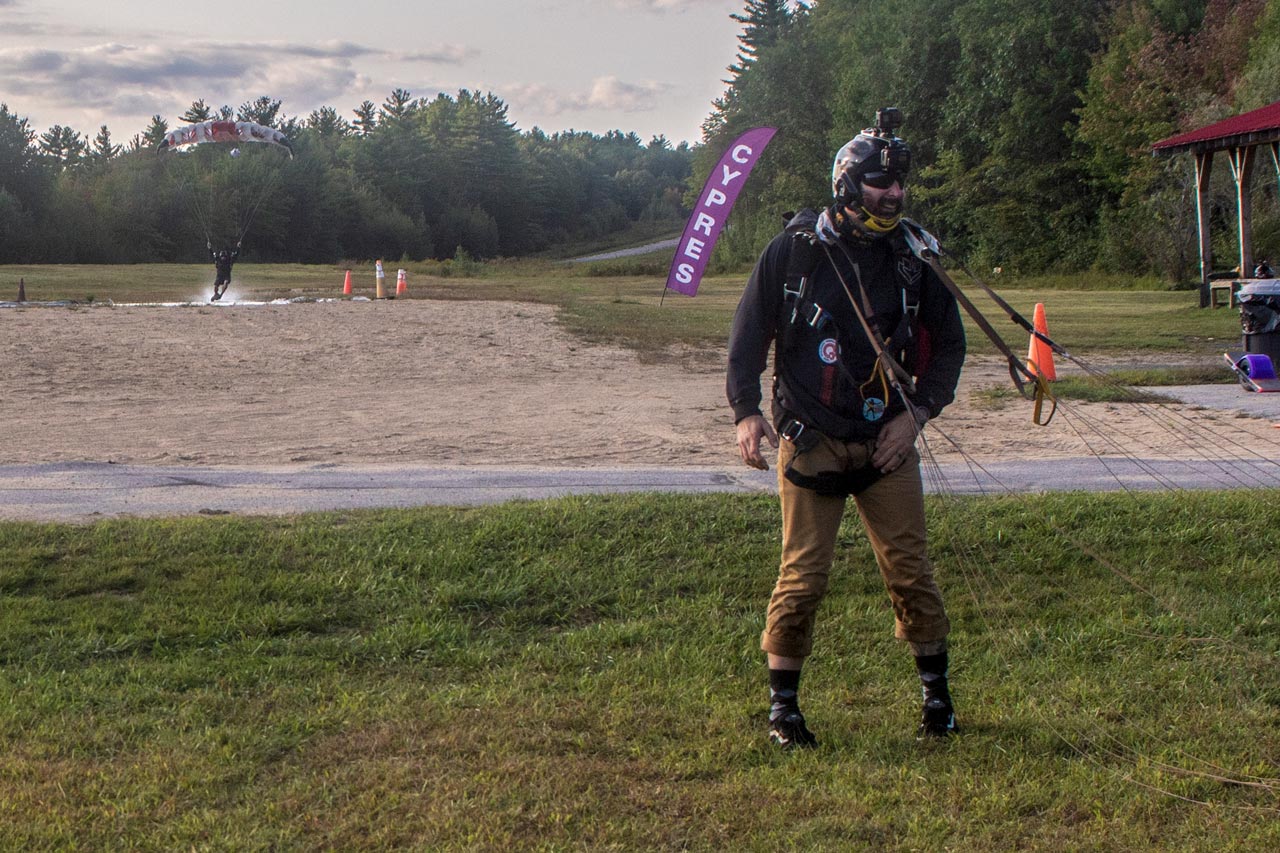
How Hard is the Landing When Skydiving?
Many people wonder if any aspect of skydiving hurts. In the skydiving landing, timing is everything. With training, practice, and proper technique, the landing can be quite soft. Typically on a tandem skydive, landing features a gentle slide-in on your bum. On a sport skydive, the landing is akin to jumping off the bottom stair onto the ground.
Now that you know what to expect from the skydiving landing, are you ready to take flight? Schedule your first skydive (or drop mad hints that a skydiving gift certificate would be the perfect present!). Blue skies!
Categories:
You May Be Interested In:
Enter to Win a Free Skydive
Join our email list and enter to win a free tandem skydive. Drawings in April and December; winner announced on social media.
You’ll get a $10 coupon toward a tandem just for signing up! Must be 18 and under 240 lbs to jump.
*By submitting this form, you are consenting to receive marketing emails from Skydive New England, 40 Skydive Lane, Lebanon, Maine 04027. You can revoke your consent by using the SafeUnsubscribe link located at the bottom of every email. Emails are serviced by Constant Contact.
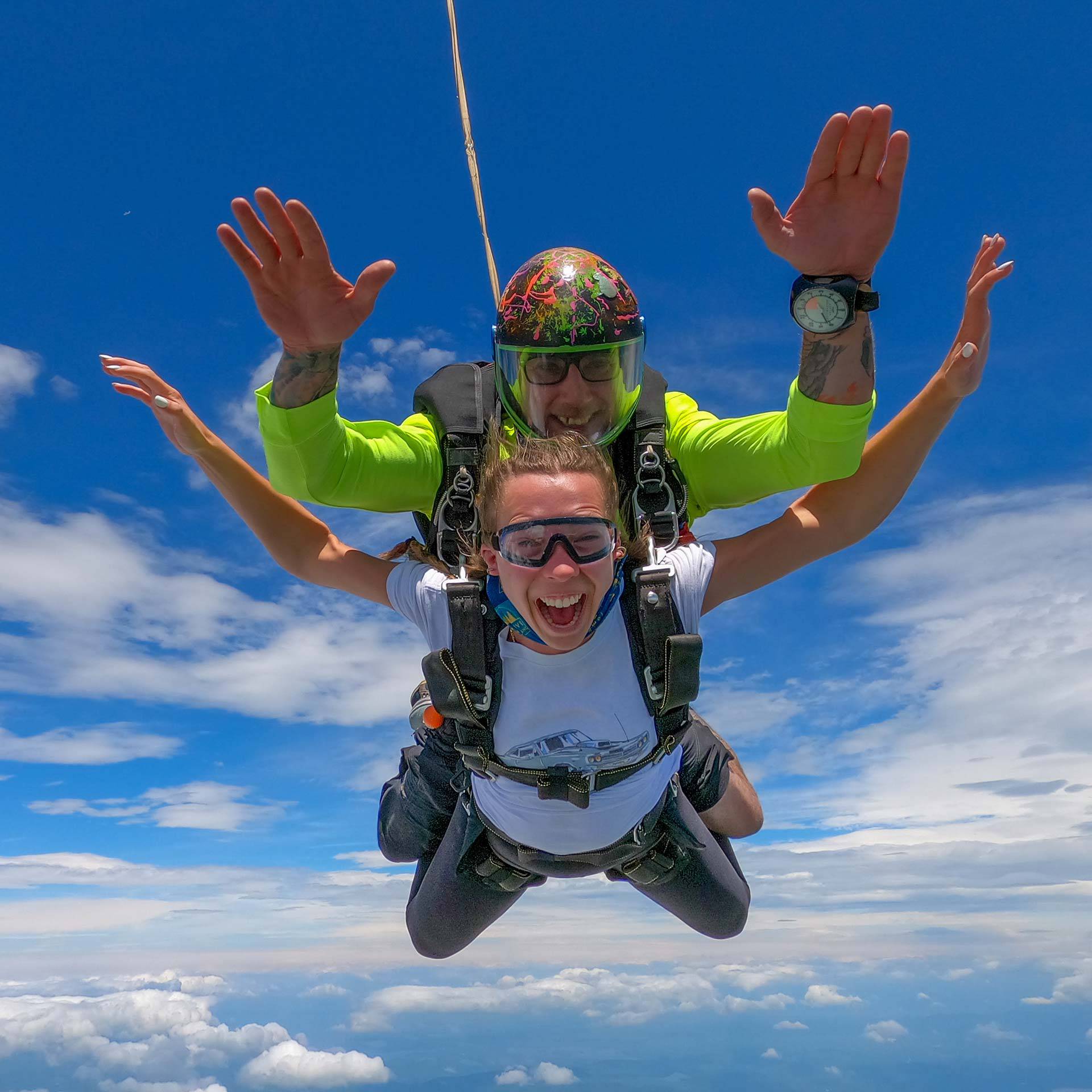
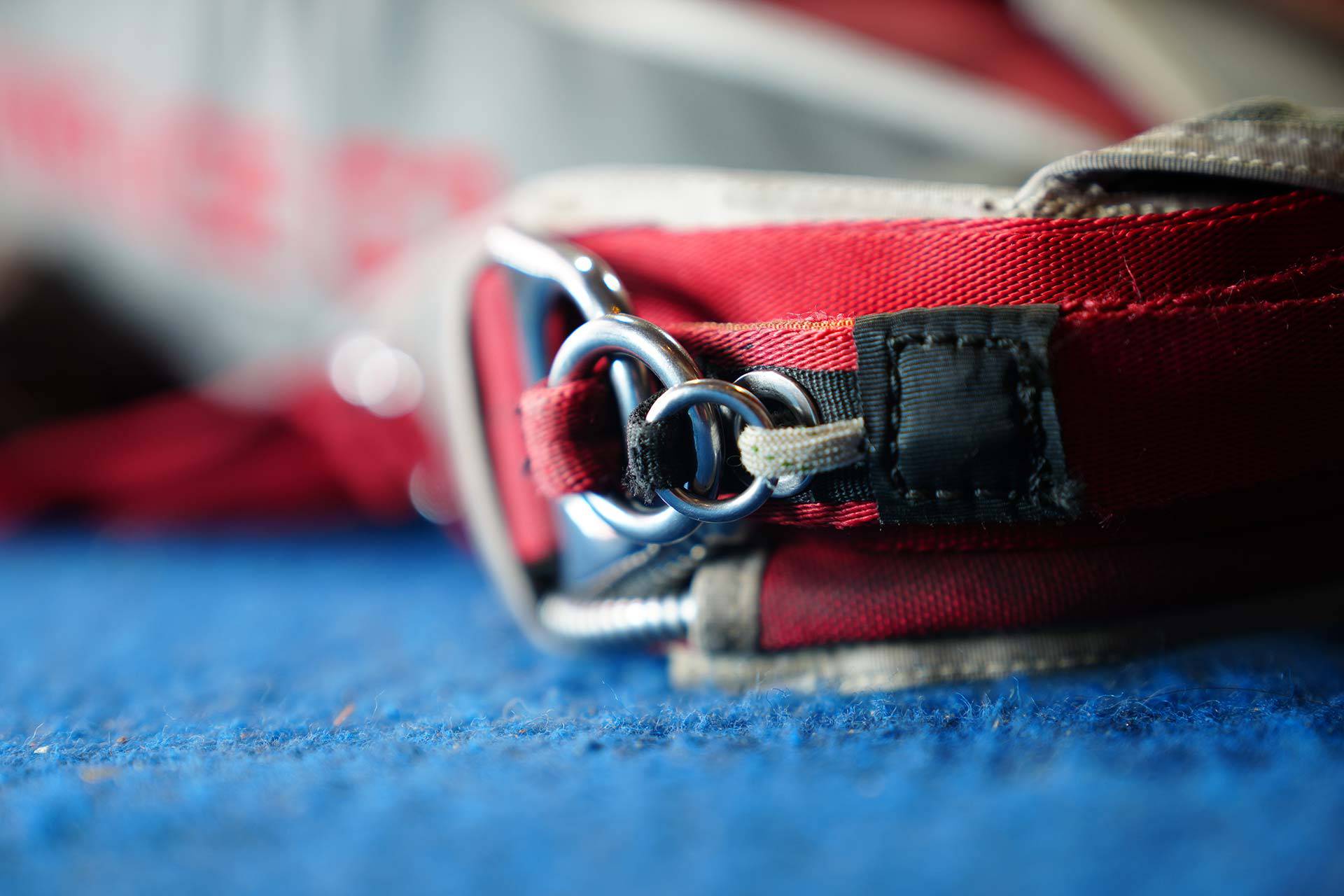
Even More Wicked-Fun Than It Looks!
Come see why the biggest DZ in New England is also the best.

